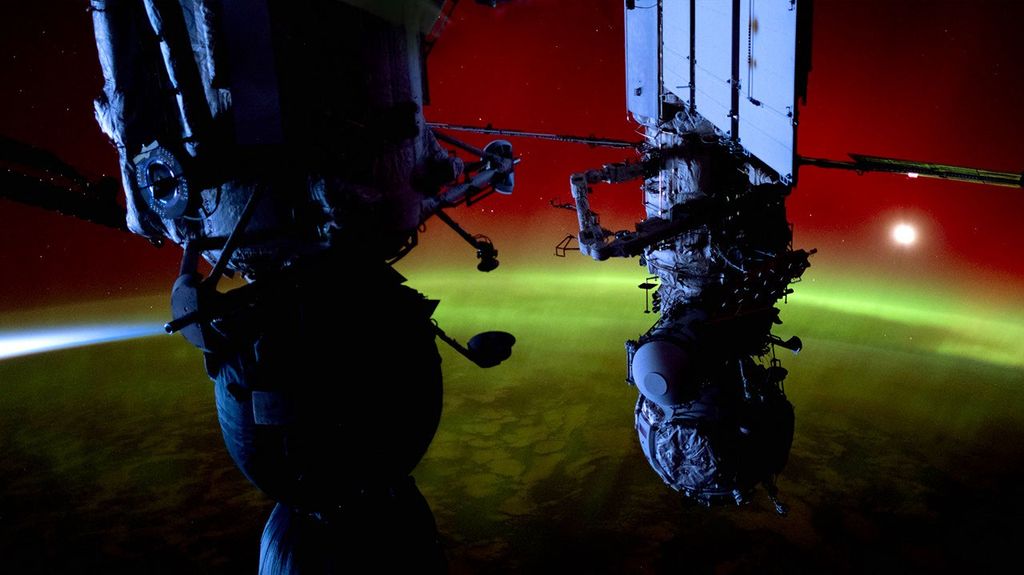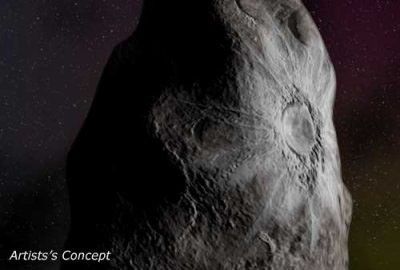The unexpectedly varied surface of a wayward piece of space debris has given astronomers using NASA's Hubble Space Telescope new insights into the characteristics of a ghostly population of asteroid-sized bodies, called Centaur objects, which orbit the Sun and dwell in the realm of the giant planets.
While observing a 48-mile-wide (80-kilometer-wide) object called 8405 Asbolus, astronomers were surprised to find that one side of the object looks like it has a fresh crater estimated to be less than 10 million years old. This shows that these mysterious objects do not have relatively smooth surfaces, researchers say.
Hubble didn't directly see the crater - the object is too small and far away - but a spectral analysis of its surface composition shows a complex chemistry, which they believe is due to freshly exposed ice from the impact that made the young crater.
"To wildly speculate, there may have been an impact that heated the surface and did something to the chemistry of the hydrocarbons present," says Don McCarthy of the University of Arizona (UA) Steward Observatory, in Tucson, AZ.
"The ice we detect does have some strong similarities to water ice, but in places it really doesn't match," adds lead investigator Susan D. Kern of UA. "This could be a new mixture of things we've seen before, but not in this combination." If this ice is new, McCarthy says, "one interpretation is you're suddenly looking at a different part of the early solar nebula" a big gas cloud that condensed into our solar system.
The reason the crater stands out is that surfaces of many primitive solar system bodies darken and redden when exposed to ultraviolet sunlight, solar winds of charged particles, and cosmic rays. However, unexposed interior ice remains bright.
The Arizona astronomers had a unique opportunity to observe both hemispheres of the object, as it completes a rotation every 4.5 hours (as estimated from the Hubble observation).
Comparing the infrared spectrum of the surface taken during two separate Hubble orbits, the astronomers realized that one hemisphere of the Centaur object has a "normal" spectrum that matches what had previously been observed with a ground-based telescope.
However, light reflected from the bright spot of newly exposed ice from the suspected impact site dominates the spectrum when the other hemisphere of the Centaur object rotates into view. "This leads us to believe we're seeing a more spherically shaped, dark object with a very bright crater on it."
To date, scientists have discovered a total of 21 Centaur-class bodies. These objects are considered escapees from a vast reservoir of comets beyond Pluto, called the Kuiper Belt. The Centaurs' orbits were perturbed into paths that carry them into the realm of the outer planets.
"Perhaps the event that caused the impact crater on 8405 Asbolus also knocked it out of the Kuiper belt," McCarthy suggests.
The Arizona team measured the surface composition of 8405 Asbolus on June 11, 1998, as part of a survey of 10 Centaur objects. This was done by using Hubble's Near Infrared Camera and Multi-Object Spectrometer (NICMOS) to take near-infrared spectra.
Kern, who just earned her bachelor's degree in astronomy from UA, is lead author on a paper about to be published in The Astrophysical Journal Letters. In addition to McCarthy, co-authors include Mark W. Buie of Lowell Observatory, Robert H. Brown of the UA Lunar and Planetary Laboratory (LPL), Humberto Campins of LPL and the Research Corp., and UA astronomy professor Marcia Rieke.


























